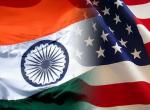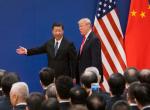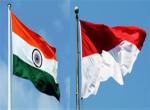In this fortnight’s compilation of some of the big ideas being debated in the media across the Indian sub-continent, we look, first, at the coverage of India’s recent amendment of its Citizenship Act and the related issue of preparing a national registry of citizens. The issue has, expectedly, received a lot of attention in Bangladesh and Pakistan. While the commentariat in Dhaka has been critical of the Bangladeshi government’s largely cautious stance on the issue, in Pakistan, analysts are urging their government to mobilise international intervention. In Nepal and Sri Lanka, however, the issue has been largely ignored--at least as far as recent media coverage shows. Instead, the commentariat in Kathmandu has been focussed on the arrest of Chinese nationals in Nepal who were subsequently handed over to Chinese authorities and flown out of the country; while in Colombo, the focus has been the new government’s decision to discard the four-year old practice of singing the national anthem in Sinhala and Tamil during the celebration of official independence day celebration.
Bangladesh: Dhaka’s unsuspecting trust in Delhi
Given Bangladesh’s interest in the recent National Register of Citizens process in Assam, this issue in general has already been given adequate coverage in the national media. With regard to the Citizenship Act in particular, the Daily Star asks in its editorial if the new legislation marked, “the end of a pluralistic and secular India”? Answering in the affirmative, the editorial remarks that the legislation will “strike at the very fundamental principles and ethos on which the country’s founding fathers had established it”. The newspaper also notes that, “The partisan stance of the mainstream civil society in Bangladesh has precluded it from taking a stand against the NRC and CAA. There is little debate about the possible ramifications of those exercises for Bangladesh in the public domain.”
Notably, this seems to be a common theme across the commentaries coming out of Bangladesh. In an op-ed in the same newspaper, columnist CR Abrar writes of Dhaka’s “unsuspecting trust on the neighbour” and notes that the law places Bangladesh in the same group as Afghanistan and Pakistan as nations that oppress their religious minorities and, therefore, shows “how the BJP government of India views Bangladesh” and how such “negative depiction has been an affront to the people of Bangladesh”. On similar lines, Jahangir Nagar University’s professor Shahab Enam Khan writes that, despite “no water deals” from India and only an “endorsement of being one of the three states that persecute minorities” in the neighbourhood, Bangladesh has still been “generous enough to consider anti-Bangladesh rhetoric as India’s internal affairs”.
Taking a much more strident tone, the Dhaka Tribune has a slew of op-eds that have all been harshly critical of both the NRC and the CAA. Muktiforum editor Anupam Debashis Roy wonders if recent developments would cause Hindutva to spill into Bangladesh. He reasons that the citizenship law “may not affect India-Bangladesh relations in the short term” as Dhaka “seems happy to overlook the problem”. In the same pages, former bureaucrat Ziauddin Choudhury argues that the new law is unconstitutional. He says, “With a constitution that guarantees fundamental rights to all, discrimination made on the basis of religion cannot be made to anyone whether citizen or aspiring citizen”. Another commentator Umran Chowdhury calls upon fellow Bangladeshis to “stand in solidarity with our Indian brethren”. He notes that while “India played a profound role in supporting the liberation of Bangladesh... today, our brethren in India are faced with the onslaught of a fascist agenda that seeks to undermine the inherent diversity of India”.
Pakistan: ‘Saffronia’ and Modi-Shah’s clean shot at the Constitution
Pakistani commentary on the CAA/NRC has largely been on predictable lines: Harsh criticism, followed by a call to the international community to intervene, quickly. The Dawn newspaper, in its editorial, described the situation as the BJP government “playing with fire” and described it as a “sinister scheme” to “permanently disenfranchise India’s Muslims”. Then, it called upon the international community, particularly “the US, EU and India’s trading partners — many of whom are self-proclaimed standard bearers of human rights” to censure “India’s blatantly anti-Muslim moves” and “condemn Delhi’s Islamophobic behaviour”. On similar lines, The Nation’s editorial also advised the government in Islamabad to “alert as many diplomatic channels as possible. With India already spreading fake news and disinformation online in favour of the current government, it is important that world governments play their part before the crisis becomes unmanageable”. It also added that, “as India tries to find its way in the global political regime via economic development, it falls short on the human rights principles and the very actions of this government go against the secular and pluralistic essence of their constitution”.
Offering a domestic political perspective on the issue, Dawn’s correspondent in Delhi, Jawed Naqvi, wrote in his dispatch that, with the CAA and the NRC, Prime Minister Narendra Modi and Minister for Home Affairs Amit Shah were “hoping to get a clean shot at India’s secular constitution”, but “rather than uniting Hindus against Muslims, what the duo have succeeded in doing is to alienate their own hardcore allies, namely the right-wing Shiv Sena and those erring Hindutva fans that had elected the Bharatiya Janata Party government in Assam. The Modi-Shah pair has thus sparked a fire that now threatens to singe them and engulf the country.”
Widening the scope of the argument made by Naqvi, commentator FS Aijazuddin asks in the same newspaper: “Who will be the victims of Prime Minister Modi’s ‘saffronoia’- every Indian Muslim, from Punjab to Bengal, from Kanyakumari to Kashmir. Those who chose — like the 97-year-old Yusuf Khan saffronised into Dilip Kumar — to remain in India can expect to be punished for their lack of foresight. More fragile icons will have their nationalism tested every day”. Aijazuddin’s odd reference to Dilip Kumar notwithstanding, the columnist does make an effort to look inward as he wonders if latest legislation will “tempt Indian Muslims to consider migrating westwards”. He believes in the affirmative, but also adds that they’d consider migrating to “anywhere except Pakistan”; indeed, “they may prefer to stay in their saffron hell than migrate to our greener purgatory” where Pakistanis are “developing our own home-grown strain of discrimination” and “suffering again the lash of authoritarianism”.
On a concluding note, it may be interesting to add the Express Tribune’s warning on how the anti-CAA/NRC protests in India may affect Pakistan. The edit notes: “India may run a false-flag operation to divert attention from the protests. It wouldn’t be the first time”.
Nepal: Deportation or Extradition? Doing China’s bidding
On December 23, Nepal Police, arrested more than 120 Chinese nationals from all over the country on various charges of cyber fraud. The arrests were made in coordination with Chinese authorities, the accused were eventually handed over to the latter and flown back to their home country. This was one of the biggest raids on foreign nationals in Nepal, and raised several questions in the commentariat. First, many wondered why the Chinese nationals had been arrested even before Nepal Police could complete its investigations. The Kathmandu Post asked in its editorial: “Is this level of intervention by the (Chinese) state apparatus to be tolerated in a sovereign and democratic country? In fact, the Himalayan Times noted in its editorial that, “the police were unable to convict them of any wrong-doing, and the Kathmandu DAO ordered their release on Sunday and slapped small fines on them for engaging in activities restricted by Nepal’s immigration laws”. In other words, the accused had been rounded up over minor infractions at best, and then handed over to the Chinese authorities. This sparked some controversy, with the Kathmandu Post noting that, “ To clear any suspicion of the police working directly for Chinese interests, the police must clarify the actual charges”.
Another factor in this situation was that during Chinese President Xi Jinping’s visit to Nepal late last year, the two countries had signed an agreement on Mutual Legal Assistance on Criminal Matters. This agreement requires Nepal to hand over to Chinese authorities, any Chinese citizen who may have broken the law even if the said breach had been committed on Nepali soil. The agreement had come in for some criticism at the time of its signing -- and many analysts saw the deal as a backdoor to an official extradition treaty.
In this context, The Himalayan Times edit noted that, “the handover of the Chinese nationals to Chinese officials is deportation, but practically this is extradition, with the government acting at China’s behest. But the question arises, since the police could not prove they had committed a crime here, was it justifiable to send them back home as demanded by China?”
A third factor that was flagged in this situation was that involving Tibetan refugees in Nepal. The Kathmandu Post edit noted that, “Nepal has for years been home to Tibetan refugees, and has provided them safe passage to third countries. Who can guarantee that the Mutual Legal Assistance pact won’t be used to target refugees in the future? In another context, how would Nepal react if the state apparatus was conducting similar mass arrests on Nepali soil on behalf of India?”
Sri Lanka: Which language? Whose anthem?
On December 24, the Sri Lankan government announced that during the country’s upcoming 72nd Independence Day celebrations on February 4 in Colombo, the national anthem would only be sung in Sinhala, and not also in Tamil. The practice of having a bilingual rendition of the national anthem was started in 2016 by the previous Sirisena government but evidently does not have the support of the new government led by President Gotabaya Rajapaksa. However, the decision was largely criticised in the media for a whole host of social, political, and legal reasons.
For example, Victor Ivan writes in the Financial Times that, “Articles 18 and 19 of the 1978 Constitution has provided official language status not only for Sinhala language but also for the Tamil language” and that the “provision is applicable to legislation as well as to all the affairs of the State”. Moreover, Ivan adds that, “Singing the National Anthem in Tamil does not cause any harm or disrespect to Sinhala culture or Buddhism”. Another FT writer, Eranda Ginige, suggests that the government should “play the music only and let the citizens sing their anthem in their preferred language”. He argues that once people “understand the meaning of the words” they will “realise that there is no language to any song”.
Ginige also makes the point that, “there are no two national anthems anyway. It’s only one song. It was probably originally written in Sanskrit-Bengali, then translated into Sinhala and then into Tamil”. For example, he adds, “‘The Mother’ by Gorkey is still ‘The Mother’ irrespective of the language you read it in. The colour ‘red’ is still the same in any language. The message in the Bible is still the same no matter which translation you read”.
Writing for The Island, commentator Lucien Rajakarunanayake points out that the National Anthem controversy has highlighted the growing rejection of “modern and rationalist thinking” in Sri Lanka as “astrology and Zodiac thinking” gain popularity. In this context, he reminds the audience that the anthem was in fact changed to its current ‘Sri Lanka Matha’ form, from the original ‘Namo, Namo Matha’ for astrological purposes.
Bringing out another perspective, Ravi Nagahawatte writes in the Daily Mirror that if the government was bold enough, it could consider emulating “countries like Kenya, New Zealand, Zimbabwe, Switzerland, Canada, South Africa and Finland which have bilingual versions of their national anthems”. He also points out that, “It is reasonable for the minority Tamils to show a liking to sing the national anthem translated word by word to Tamil” and, indeed, “As mental wounds slowly heal after the civil war the Government must not prevent the national anthem being sung in Tamil”.

_0_0_0_0_1.jpg)







Post new comment